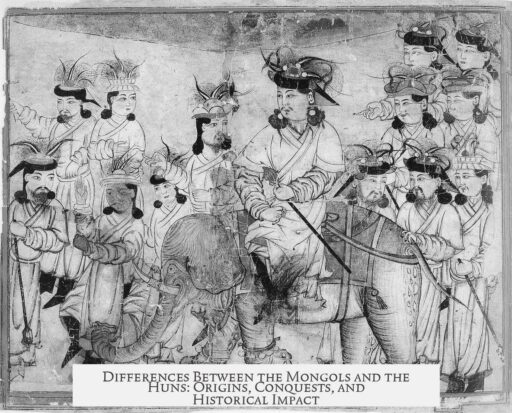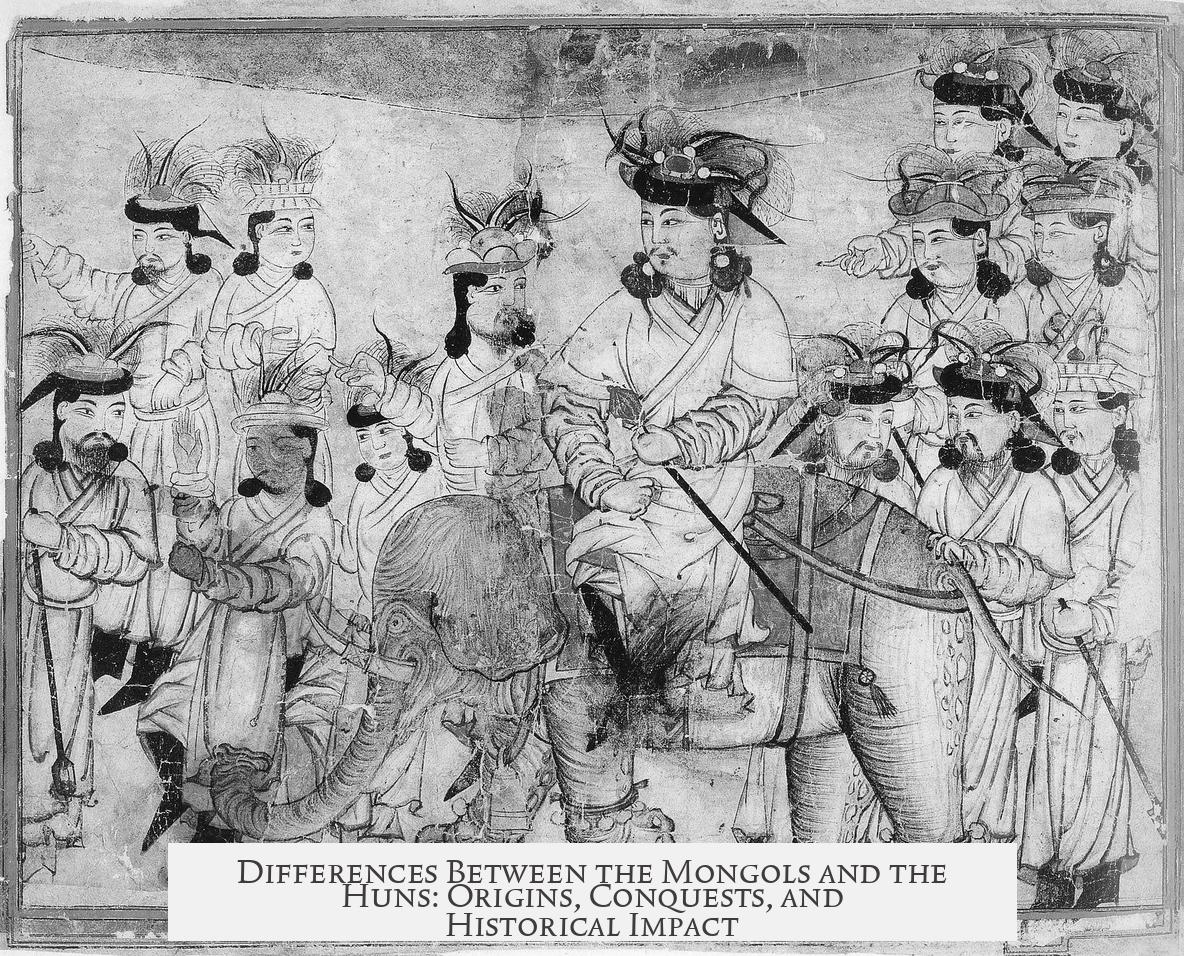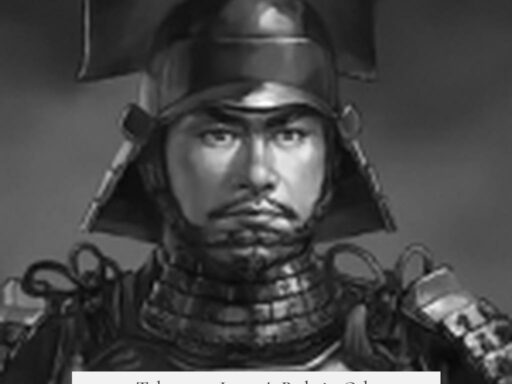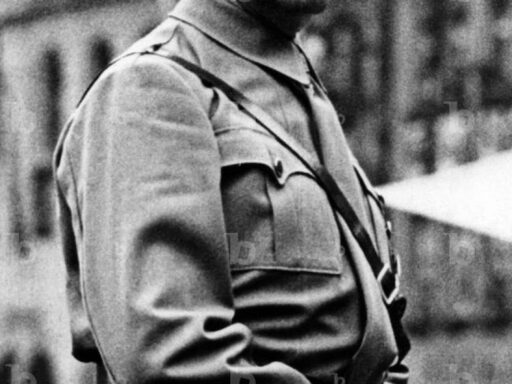The difference between the Mongols and the Huns lies in their origins, time periods, geographic reach, cultural records, and historical impact.
The Huns appeared earlier, in the 4th century CE, while the Mongol Empire began in 1206 CE. The Huns originated from the steppes of Central Asia, though their exact origins remain uncertain due to scarce archaeological evidence and absence of written language. In contrast, the Mongols came from the region now known as Mongolia, and under Genghis Khan, they created a vast empire documented in historical records.
Geographically, the Huns lived in western Asia and gained brief control over parts of Europe. They first entered European history near the Caspian Sea in 91 CE, reaching Europe by the 4th century. Their incursions were significant but relatively short-lived. The Mongols, however, had a much broader influence. Starting in 1206 CE, their empire spanned from the Pacific Ocean to the Caspian Sea. Their 13th-century expansion extended into Eastern and Central Europe, reaching present-day Ukraine, Poland, Germany, Albania, and Austria.
The cultural documentation distinguishes these groups further. The Huns left no known written records, which makes studying their society and history challenging. Their legacy mainly survives through external accounts by Roman and other chroniclers, which sometimes depict them as fierce warriors but offer limited insight into their culture.
The Mongols maintained written records, most notably The Secret History of the Mongols, composed around 1227 CE. This text details the life of Genghis Khan and Mongolian traditions, surviving due to translation into Chinese during the Yuan dynasty founded by Kublai Khan. Although not entirely precise historically, it is a crucial primary source that illuminates Mongol leadership and culture.
| Aspect | Huns | Mongols |
|---|---|---|
| Time Period | 4th century CE | 1206 CE and onwards |
| Origins | Uncertain, possibly Central Asian steppes | Mongolia |
| Geographic Reach | Western Asia & parts of Europe briefly | Asia, Pacific to Caspian Sea, extended into Europe |
| Written Records | None preserved | The Secret History of the Mongols |
| Historical Legacy | Fierce but short-lived impact in Europe | Significant, reshaped Eurasia politically and culturally |
Both groups earned reputations for ruthlessness. Attila’s Huns and Genghis Khan’s Mongols are often noted in history for their military brutality. However, the Mongols had a far larger and lasting impact on history due to their expansive empire and influence across continents.
While the Huns are sometimes regarded as a precursor or earlier parallel to the Mongols’ potential European conquests, the Mongols’ organized empire-building and diplomatic efforts made their legacy more enduring.
- The Huns emerged earlier with uncertain Central Asian origins and no written records.
- The Mongols began in the 13th century, originating from Mongolia with extensive written histories.
- The Huns had brief control over parts of Europe; the Mongols conquered vast territories from Asia to Europe.
- The Mongols’ cultural documentation is richer, preserving their history and folklore.
- Both groups are known for military ruthlessness, but the Mongols’ historical influence is far greater.
What is the difference between the Mongols and the Huns?
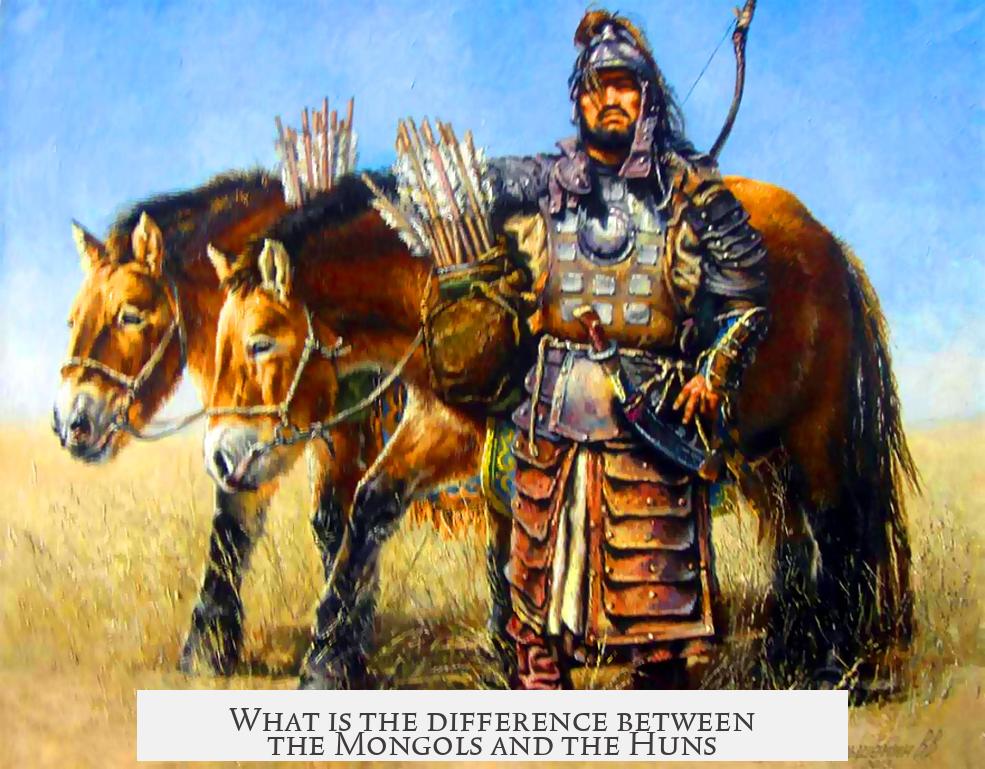
At their core, the difference between the Mongols and the Huns boils down to time, geography, cultural records, and historical impact. They both were fierce nomadic warriors known for swift conquests, but their legacies and origins couldn’t be more distinct.
Let’s unpack these differences with some sharp focus and clear facts, minus the typical clichés and fluff.
Their Origins and Time Frames: Mysteries vs. History
The Huns are shrouded in mystery. Try tracing their roots, and it feels like searching for a needle in a haystack wearing medieval armor. Their precise origin remains debated because they left no written records. Scholars floated theories connecting them to the Xiongnu, an ancient nomadic tribe from Central Asia. However, evidence is patchy at best.
What we do know: The Huns emerge in written history near the Caspian Sea around 91 CE, courtesy of the Roman historian Tacitus, but their European incursions only begin in the 4th century. Their homeland likely lies somewhere in the vast and empty steppes of Central Asia, though no one’s nailed down the exact spot.
Now switch gears to the Mongols. Unlike the Huns, their story is clearer. The Mongol Empire officially kicks off in 1206 CE when Genghis Khan unites disparate Mongol clans. Their homeland is Mongolia itself—a convenient name that clarifies things. By the time Genghis Khan dies in 1227, his empire spans from the Pacific Ocean all the way to the Caspian Sea. That’s quite the real estate flip.
The Lands They Conquered: Short-Lived vs. Empire Builders
The Huns had their European moment, albeit brief. Their presence is mostly confined to western Asia and parts of Europe during their peak. Led famously by Attila the Hun, they struck fear across the continent but never quite built a lasting empire.
The Mongols? Oh, they played a different game altogether. Their empire not only covered massive swaths of Asia but advanced into Eastern Europe, crashing through Ukraine, Poland, Germany, all the way down to Albania and Austria. If there were a marathon for conquest, the Mongols would’ve won, lapping the competition repeatedly.
Both groups are famously ruthless. Attila and Genghis gave the word “barbaric” a run for its money. Yet, history favors the Mongols for their larger, more lasting imprint.
Written Records: Silence vs. Stories
If you like reading primary sources, the Mongols win hands down. The Huns? They left us deafening silence. No letters, no sacred texts, nada.
In contrast, the Mongols left The Secret History of the Mongols, a fascinating 12-chapter work from around 1227 CE. It chronicles Genghis Khan’s life and offers insight into Mongolian customs and folklore.
This treasure survives today mainly because it was translated into Chinese during the Yuan dynasty—a dynasty established by Genghis’s grandson Kublai Khan. While it’s not the most rigorously factual document, it’s invaluable for understanding both the man and his culture.
Historical Impact and Legacy: A Footnote vs. A Footprint
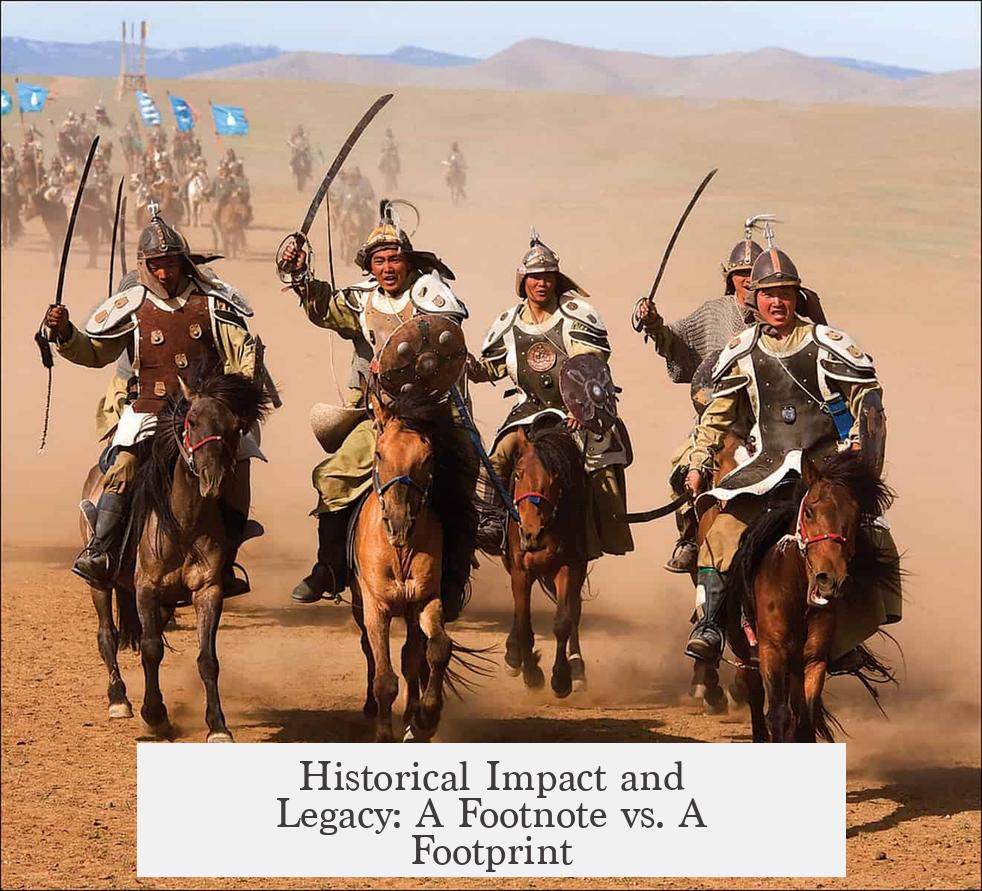
The Huns often get framed as a prototype of what the Mongols would later achieve in Europe—an impressive, if fleeting, force that shook the continent. Their story ends rather quickly with no empire to pass down, largely because of fragmentation after Attila’s death.
The Mongols, however, shaped world history on a grand scale. Their empire connected the East and West, opening trade routes and exchanging ideas and technologies. The vast expanse they controlled altered cultures, economies, and warfare practices.
While both groups earned reputations as ruthless warriors, only the Mongols created a vast cultural and political legacy that echoes in history books and global culture today.
So, What Can We Learn from Comparing Them?
- Persistence beats brevity: The Huns had a short, fierce run, but the Mongols built an empire that lasted generations.
- Records matter: Without written documents, history blurs. The Mongols give us stories, the Huns leave us guessing.
- Location shapes destiny: Mongolia provided a solid base and a unifier in Genghis Khan; the Huns likely roamed the steppes without a lasting center.
- Legacy isn’t just about might: The Mongol Empire’s influence remains global through cultural exchange and infrastructure.
Ever wonder how history might’ve changed if the Huns left behind a record like the Mongols? Imagine an ancient “Twitter” feed from Attila himself, giving daily conquest updates! But, alas, we must piece together their tale from other sources.
To Wrap Up
While both the Mongols and the Huns are often lumped together as steppe nomads with brutal reputations, their stories part dramatically in origins, scale, records, and legacy. The Huns remain intriguing shadows with fleeting influence, while the Mongols leave a vast, documented imprint across continents.
Understanding these differences enriches our grasp of Eurasian history and reminds us that not all great warriors write their own books—but when they do, the world pays attention.
